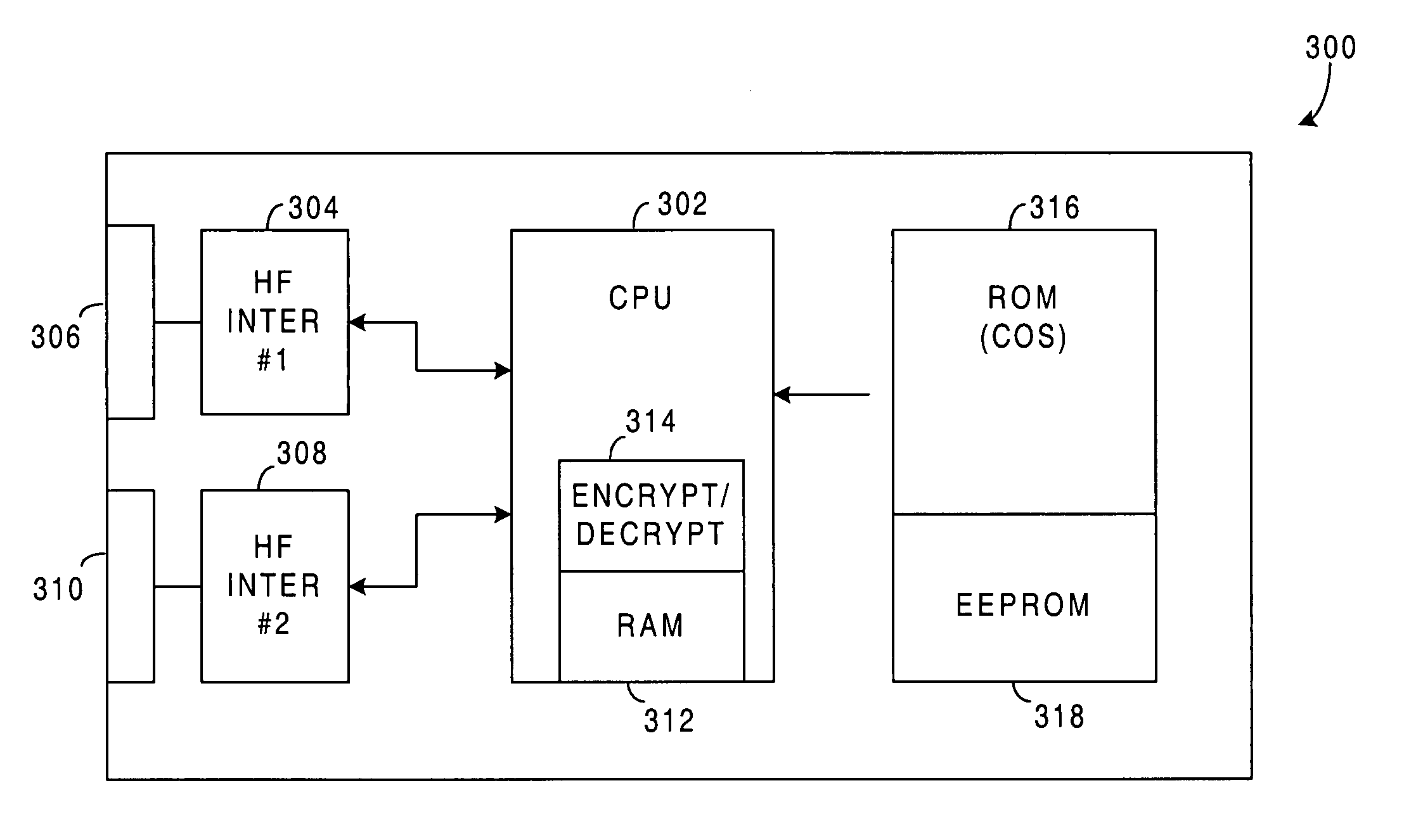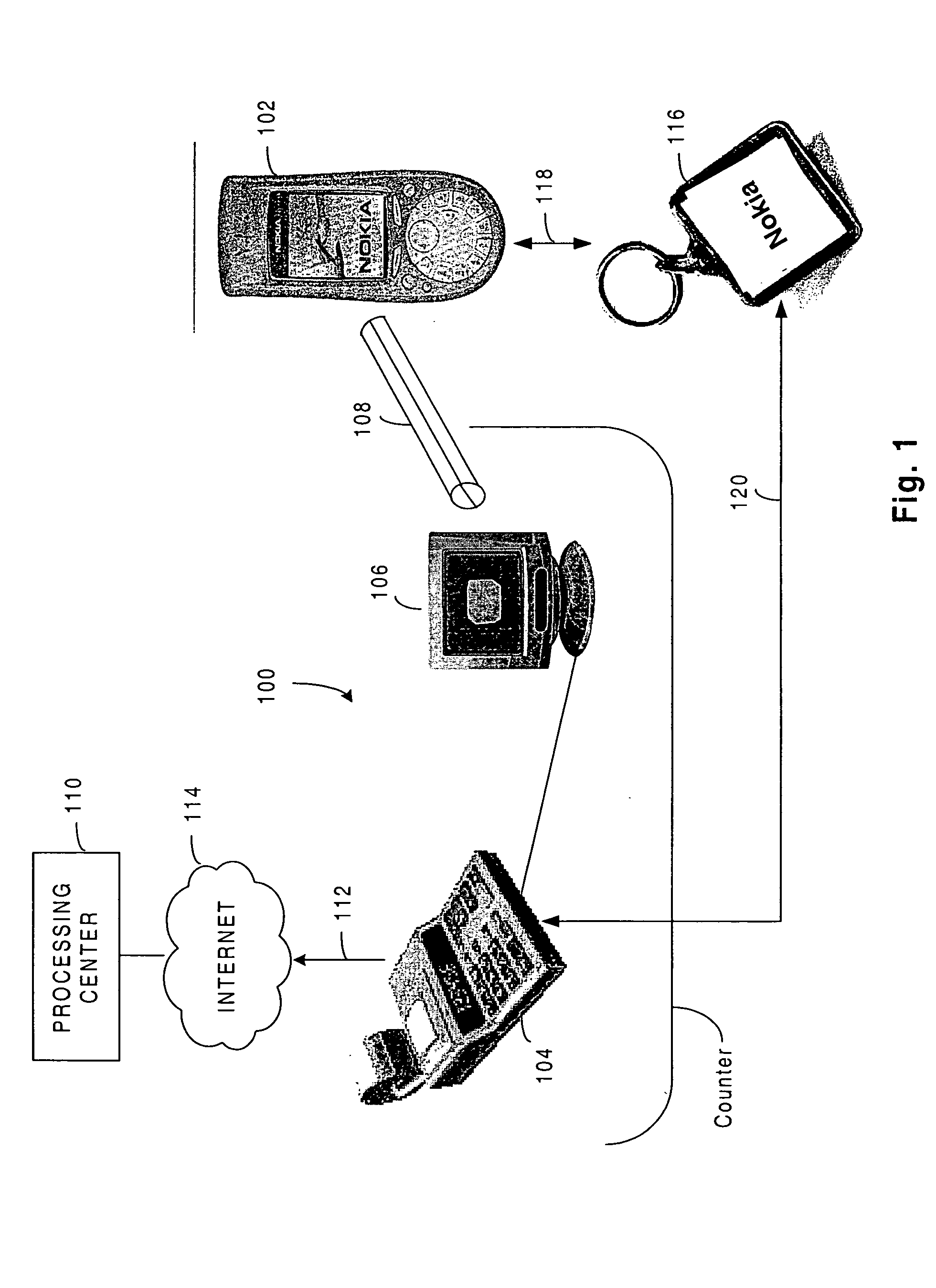Electronic payment schemes in a mobile environment for short-range transactions
a mobile environment and electronic payment technology, applied in the field of electronic payment schemes in a mobile environment for secure short-range transactions, can solve the problems of difficult design of easy-to-use interfaces for such options in traditional short-range transaction systems, and achieve the effect of enhancing transaction security and ensuring the security of the transaction
- Summary
- Abstract
- Description
- Claims
- Application Information
AI Technical Summary
Benefits of technology
Problems solved by technology
Method used
Image
Examples
Embodiment Construction
[0033] A brief description of short-range wireless systems, as follows, should aid in a better understanding of the invention:
[0034] A. Short-Range Wireless Systems
[0035] Short-range wireless systems have a typical range of one hundred meters or less. They often combine with systems wired to the Internet to provide communication over long distances. The category of short-range wireless systems includes wireless personal area networks (PANs) and wireless local area networks (LANs). They have the common feature of operating in unlicensed portions of the radio spectrum, usually either in the 2.4 GHz Industrial, Scientific, and Medical (ISM) band or the 5 GHz Unlicensed-National Information Infrastructure (U-NII) band. Wireless personal area networks use low cost, low power wireless devices that have a typical range of ten meters. The best-known example of wireless personal area network technology is the Bluetooth Standard, which operates in the 2.4 GHz ISM band. It provides a peak ai...
PUM
 Login to View More
Login to View More Abstract
Description
Claims
Application Information
 Login to View More
Login to View More - R&D
- Intellectual Property
- Life Sciences
- Materials
- Tech Scout
- Unparalleled Data Quality
- Higher Quality Content
- 60% Fewer Hallucinations
Browse by: Latest US Patents, China's latest patents, Technical Efficacy Thesaurus, Application Domain, Technology Topic, Popular Technical Reports.
© 2025 PatSnap. All rights reserved.Legal|Privacy policy|Modern Slavery Act Transparency Statement|Sitemap|About US| Contact US: help@patsnap.com



